Ballast for Luna Blu
12
12
|
|
Hi folks,
Offline we've been discussing options for ballast for Luna Blu. After a good session with the builder, a combination of some lead and water ballast will certainly be the ticket. Oh by the way, this is Luna.... 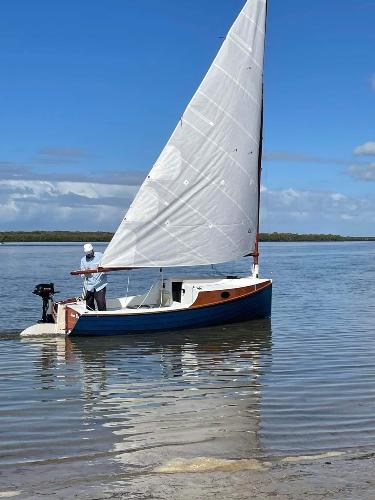
A lapstrake cat boat. I'd like to say I built her but I didn't. I did do an awesome deal though by trading Kalliope for Luna. I have a 100 litre water bladder but unfortunately cannot locate anywhere central to install it. I am going to have to get two smaller 50 litre ballast bags and put them in the lockers either side of the bridge deck (red circle both sides). 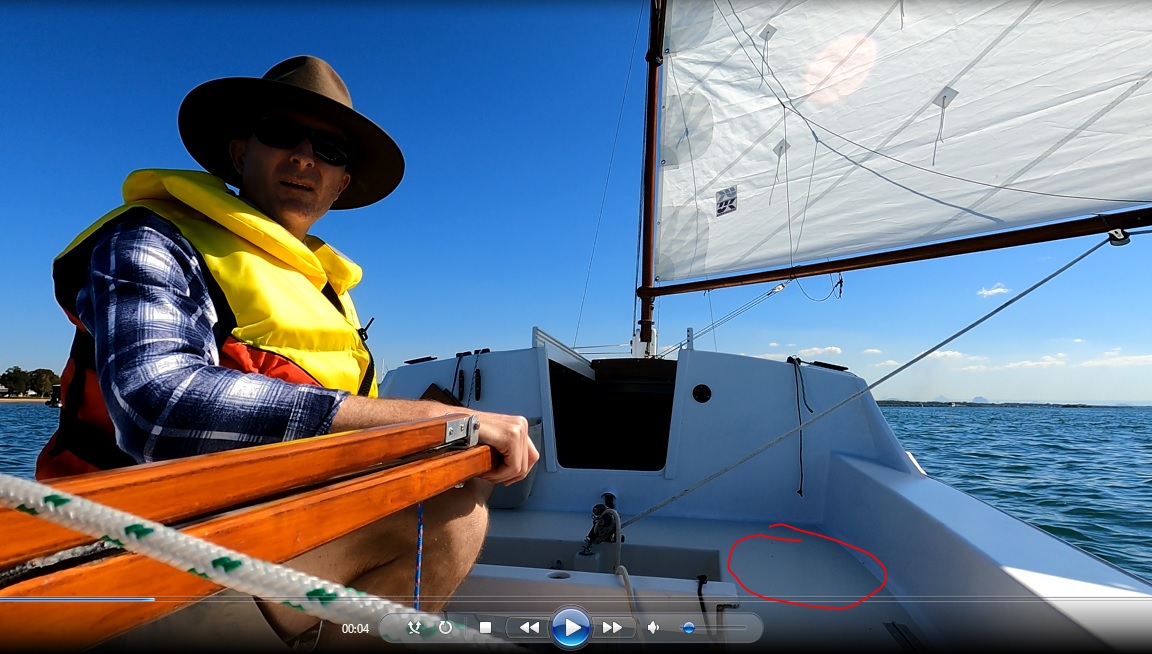 In terms of lead....I cast myself two shaped ingots and the plan is to secure them to either side of the centreboard case. They are 15kg each.  This shows an early construction photo of the CB case with 4 straps each side to hold the casting against the case. 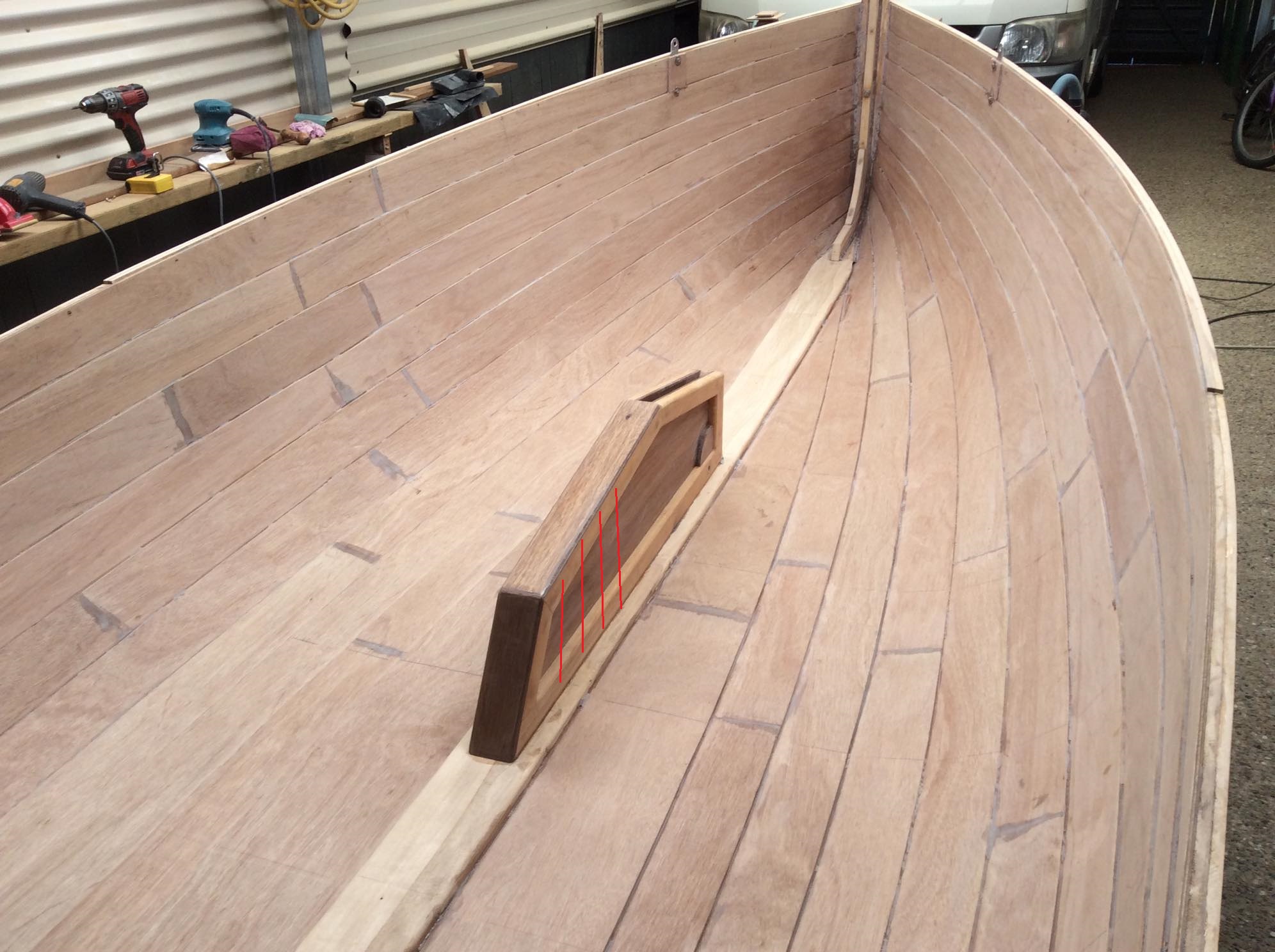 That part of the CB case is now under the bridge deck with bulkhead forward and aft of the proposed location. 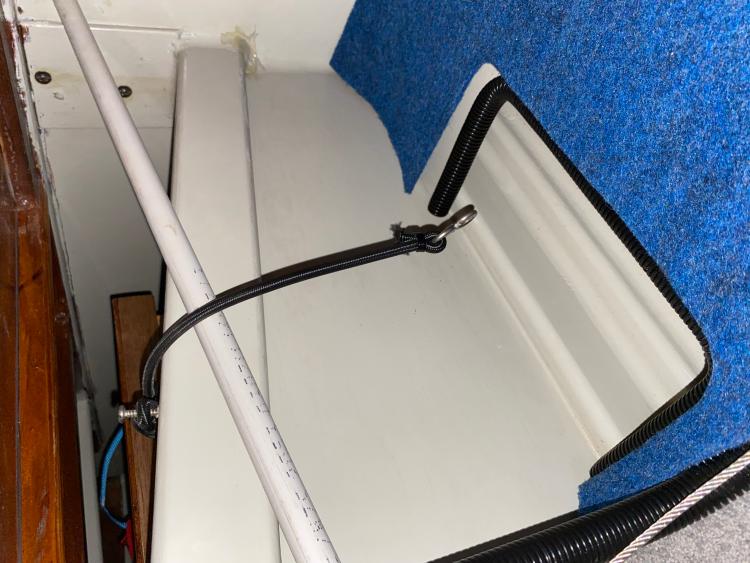 I hope that all makes sense. My only concern is 30 kg of force against the CB case if the boat is ever on her side....but it seems very well supported. The only other place is down on the garboard which is flat against the keel, or on the keel forward of the CB. That might offset the weight of gear in the cockpit lockers and the 20 kg outboard?? Any suggestions would be welcomed. No cutting or drilling until this is signed off by the brains trust. Jason |
|
|
Darn the photo of under the bridge deck is on it's side....rotate right! The blue carpet is on the floor.
|
|
|
In reply to this post by Jason Mayer
Jason,
I think I understand the photo - a wider shot would help. If the CB case is supported through a bulkhead there is nothing to worry about at. Just laminate extra ply to the case side if you think its not strong enough. Ahh, that's a real bugger removing all the paint. An easier solution is glue hardwood battens to the "logs" that strengthen the case sides, try to glue to the hog also. Then strap the lead to the battens - the weight will be supported by the hog and the thick case edges. What I would worry about is the trailer hitting a pothole. Towing can break anything that isn't rigidly secure - I found out the hard way. It's a bit late, but you could cast lead into a wooden frame. Bevel the inside edges, add screws as anchors, lay on scrap wood and pour. That's how I added lead to MilliBee's centreboard. You could securely screw or bolt the frames to the CB case. As it's winter in OZ, and cooler than summer, crack open a Fosters and fire up the cooker. BTW That's a lovely lapstrake hull, I lost count of the planks  -Paul |
|
|
Try these photos.
The first one is from the day I first went for a look and the bit under the bridge deck where my feet are, is where the rear of the CB case is. 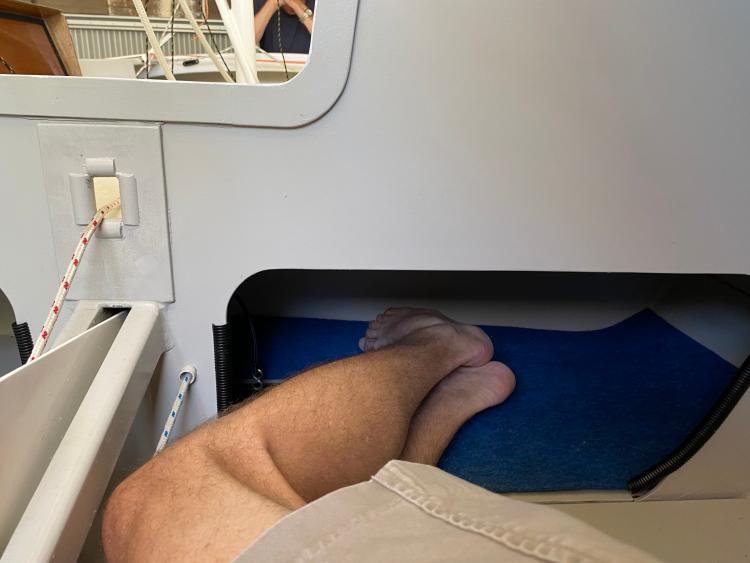 The second one is with the floor board removed showing the same area where my feet were. 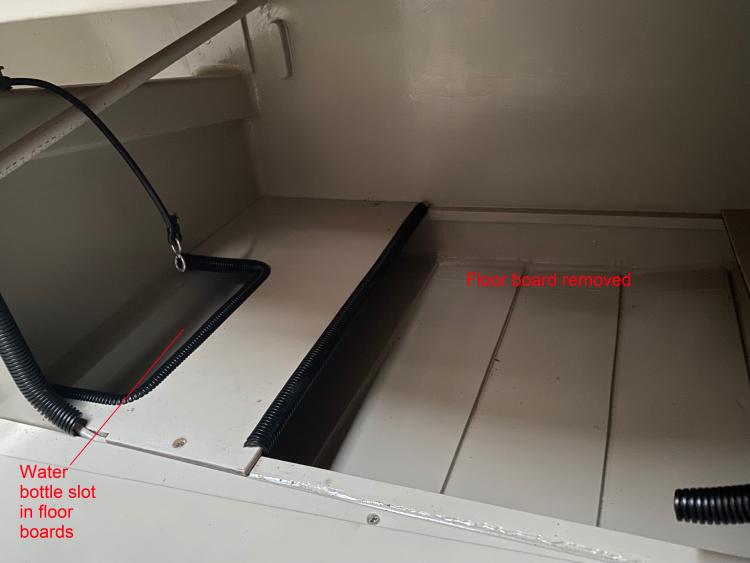
|
|
|
Jason,
That's probably the strongest part of the boat. My instinct is to attach the weight to top and bottom of CB case frame:  Paul |
|
|
In reply to this post by Paul H (admin)
Thanks Paul,
I like the idea of the wooden frame. Then I can screw to the hog at the bottom and that thickener at the top of the CB case which is the strongest part for sure. I'll also pull out all the floor boards in the cabin tomorrow and see what opportunities await under there. The cast iron camp oven is now unusable for food, so it's super easy just to crank up the natural gas burner and remelt the nice clean lead into a new shape. Now that I've got rid of all the contamination, paint, sealant, dirt etc from the scrap lead....lucky I was wearing a full face respirator with organic vapour and gas filters. Even then the smell of burning paint is stuck in my nose. It was amazing how much crud I scooped off the top. I'll report back tomorrow. ps no Fosters in this house. Funny but they don't even sell it at the local bottle shop anymore, we just seem to send it all overseas.....I'll have to come over there to have one. Jason |
|
|
In reply to this post by Paul H (admin)
Yep and the frame will sit right on the keel which is under the hog and sticks out about an inch. I'll check I have a trailer roller under that part of the keel and should be all good for driving.
I found a photo the builder gave me that shows what is under the floor in front of the centreboard. It would be super easy to cast some little 5-10kg blocks and screw into the keel too. Plus some more planking porn.  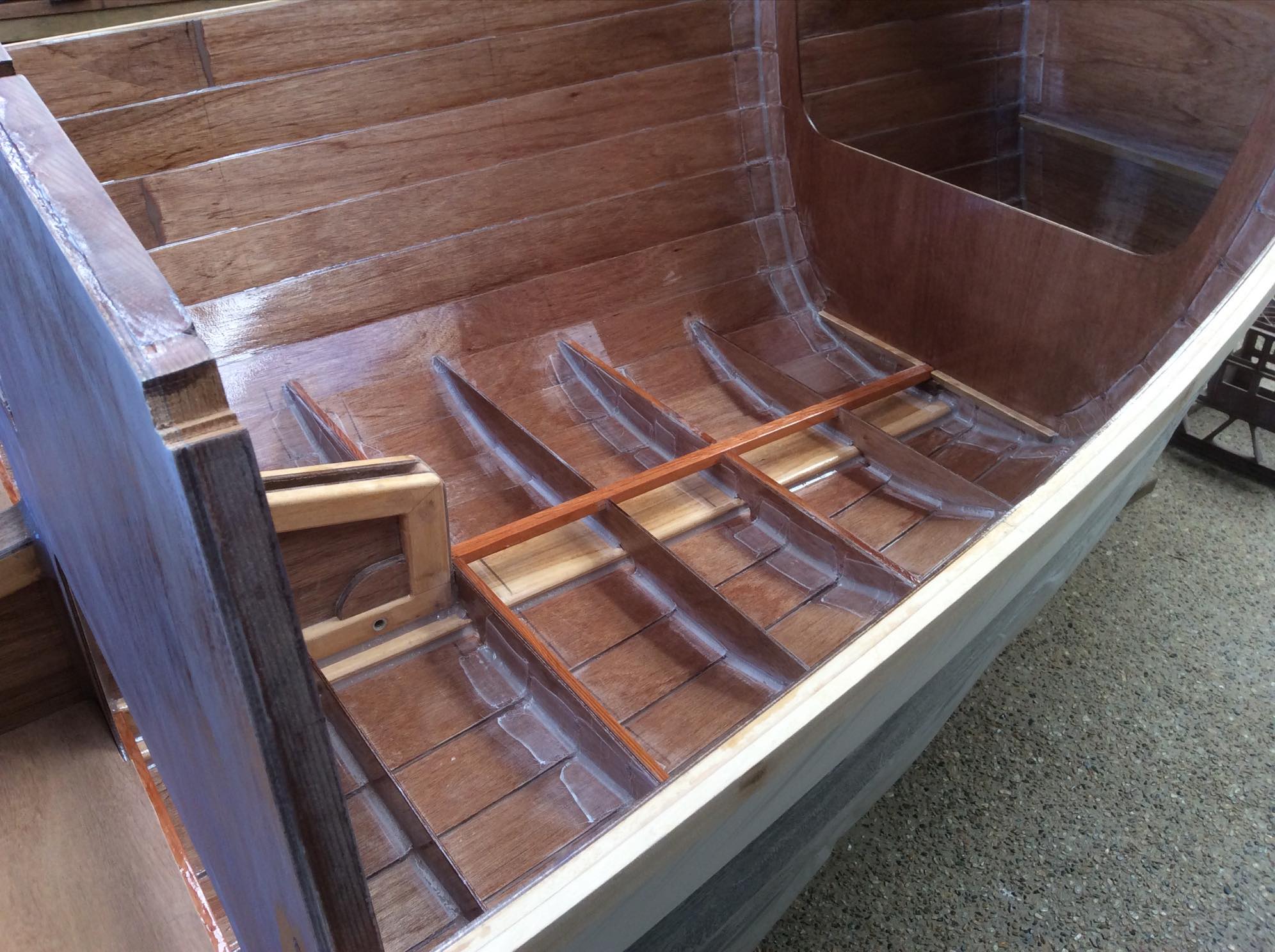
|
|
|
In reply to this post by Jason Mayer
Hi Jason,
My inclination would be to have the ingots lying alongside the CB Logs under the floor boards with a batten or two to stop them moving, if that is do-able. That's presuming the boards are securely screwed down. I've heard of people (Iain Oughtred ) wrapping the lead in carpet to keep it snug and to protect the hull. Don't come here looking for genuine Aussie Fosters, although why you would want to I've no idea, I think ours is brewed in Warwick or some such place. Graham. |
|
|
In reply to this post by Jason Mayer
MilliBee is constructed a similar way. The lighter coloured hog in the second picture will be very strong, as it forms a T beam with the CB case.
I'm not sure how thick the planks are, they look like 6mm. I have managed to crack a 6mm floor panel drying out on a sharp stone, with me sleeping the same side. I no longer trust 6mm bottoms - Graham's Morbic has a 9mm centre panel I think which is about right. The planks will be strong bonded together, but not as strong as the hog. G'day Bruce, or is it night. -Paul |
|
|
In reply to this post by Port-Na-Storm
Graham,
Those floor boards are loose to allow for storage underneath but he did provide screw holes to secure them but the scantlings are pretty light. That would be the ideal place to put then right down low but I'm not sure how just yet, I'll give it some thought. Yeah we don't drink Fosters for a reason.....no wonder we can't buy it...it's probably not even made here We brew Guinness just down the road from Brisbane too....go figure...it's nothing like the original. It's more like a dark lager. |
|
|
In reply to this post by Paul H (admin)
OK.....
Here is what I did. Firstly I confirmed that the garboard plank is indeed 6mm and I'm not confident putting 15kg of lead onto it. I cannot get access to the frames fore and aft of that space because of the way those two bulkheads are constructed in that space. So I am stuck with the keel and the hog and the CB case. 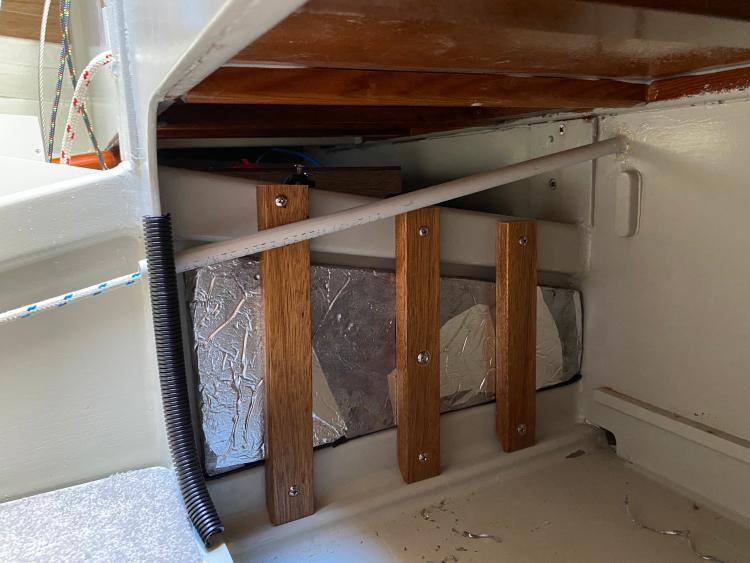 I thought long and hard about re-casting the lead into a timber frame or a different shape but I am confident in the strength of the CB case given the bulkheads fore and aft of this location so I think this will be fine. Any shock loads due to trailering will be taken though the 3mm rubber strip under the lead and directly onto the hog and keelson. There is a trailer roller directly under it. Any sideways force will only be the result of a capsize and should be "gentle". The lead is secured by 6 x 12 gauge SS screws with 10mm of embedment into the CB case framing and the hog. Thanks Graham and Paul for inputs it was helpful in working out the strongest part of the boat. Jason |
|
|
Oh....and I tapped an 8mm bolt into the lead to stop any fore and aft movement. I also put a bunch of PVC insulation tape on the back of the lead to give some protection to the paint of the CB case.
For what it's worth. The cricket is close! I like it that way. This test could go any way. Stokes was good! Marsh was good too. If it was up to me, Warner and Smudge would not be part of the team....disgraced our country's values. Jason |
|
|
For those interested in the lead casting process....
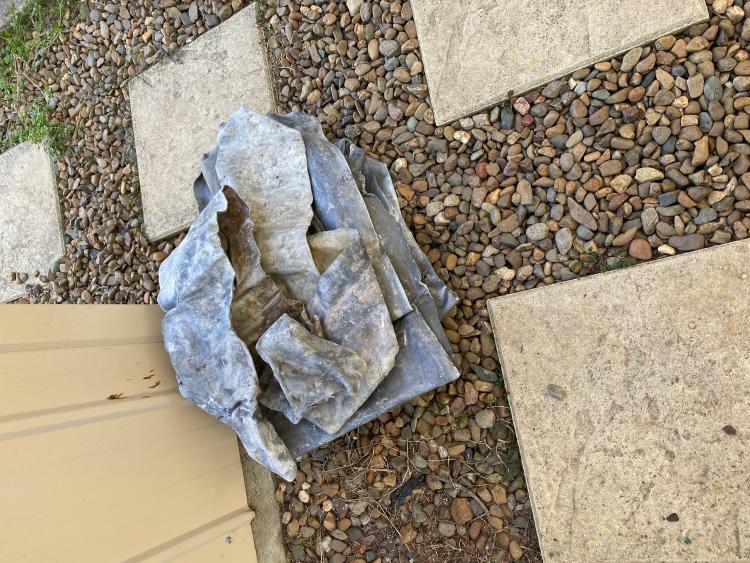 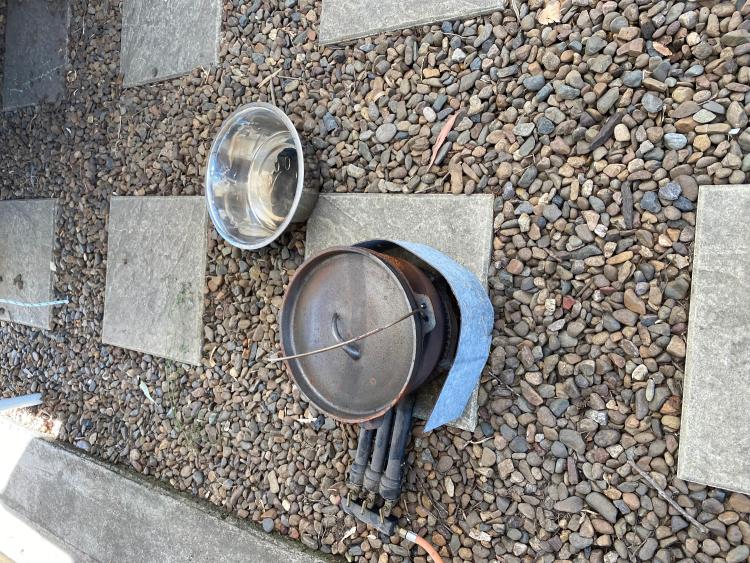 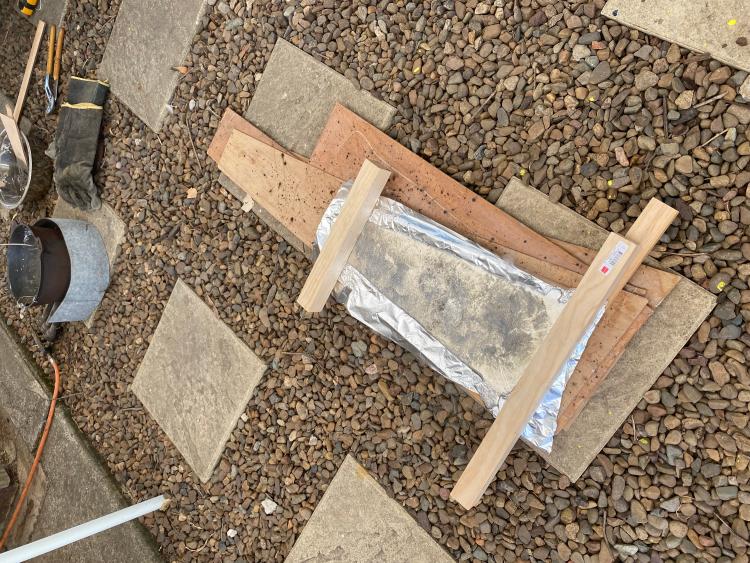 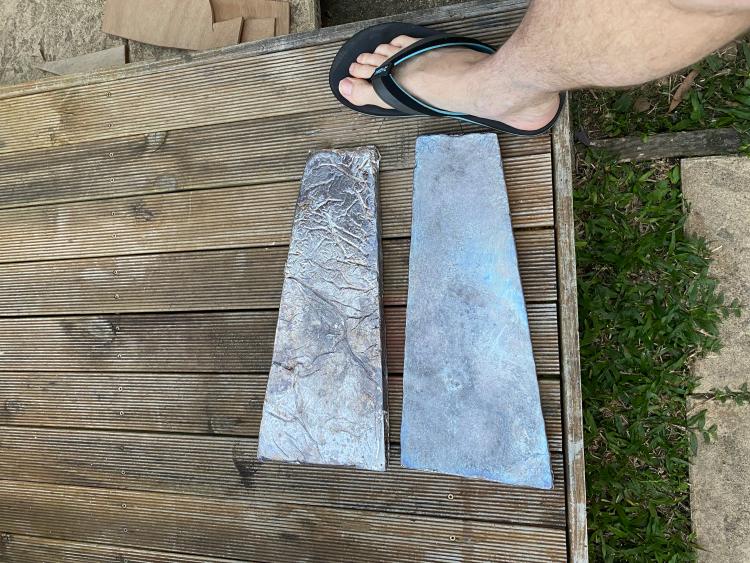 My strong advice is to use a gases and vapours respirator. Even though the lead looked clean there was paint and sealant contamination and at lead melting temperatures it smokes like Yul Brynner.... It's dead easy to melt lead though. Just a camp oven and a gas burner. Once you have a metal pool started you just keep adding pieces and they melt away in seconds. That camp oven is forever a lead pot though. Jason |
|
|
I used an old frying pan, the lead was fairly clean though.
Knowing how toxic lead can be, I kept the pan well away from the house for some years, then recycled it. My big concern was lead splatter when pouring. So I wore welding gloves, goggles, heavy clothes, safety boots etc. |
|
|
In reply to this post by Jason Mayer
Its all looking Jason, quick work as usual.
Those non-slip mats will have a cushioning effect behind the lead. Likewise the thin polyurethane or polystyrene packing material. Paul |
|
|
Thanks.
I might seem quick but believe me it was a solid 4 days of work. I have the floorboards back in today and next I think I will paint a nice piece of ply to cover over the area and it will be fully hidden. Jason |
|
|
In that area I put a polystyrene box, reclaimed from keeping drugs cool when transporting
I cut the bottom to fit the hull, along with lid it became a mini fridge cooled by the sea. Stored clothes over and around it as extra insulation. Milk definitely lasted a bit longer, beer never got warm. Worth an experiment in the scorching Oz summer? |
|
|
Haha water temperature is 23degC up here, but might work on my trip down south in September, they'll have water temps in the teens for sure. Neat idea. I had seen a boat in Portsmouth on Youtube that kept his beer in a cubby hole under the floor against the hull.
|
|
|
In reply to this post by Paul H (admin)
Two things I accidentally discovered when making my Ballast:
If you paint the lead with Hammerite as soon as it solidifies but is still hot it will cure in seconds and be really tough. This can then be handled without protective gloves. I think it bonds well because an oxide layer has not had time to form. Make the ballast in several pieces, then when adding other heavy gear the appropriate amount of lead can easily be removed. |
|
|
In reply to this post by Jason Mayer
I had a similar system on one of my boats. I found that in cold weather it didn't do much but in hot weather the butter was impossible to spread. In my installation where the cool box was exposed to the hull came above the waterline. I believe that water washing up the side of the hull and then evaporating was what made it work. |
«
Return to General Discussion
|
1 view|%1 views
| Free forum by Nabble | Edit this page |

